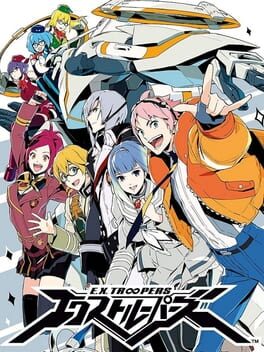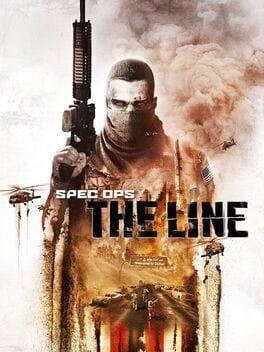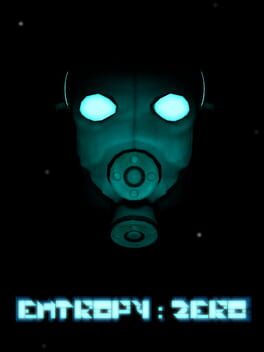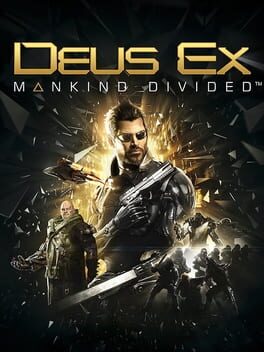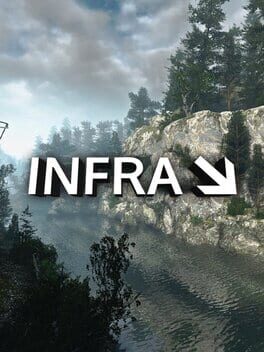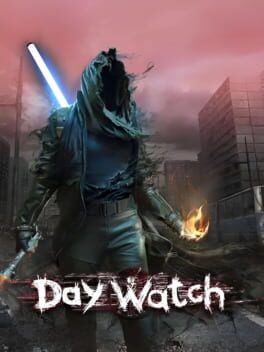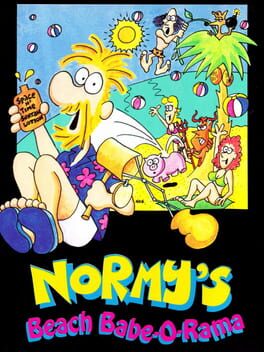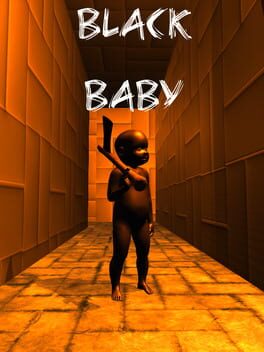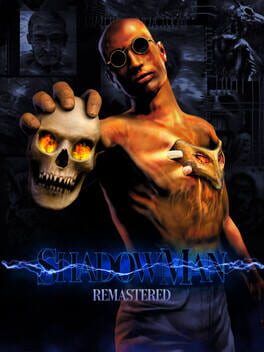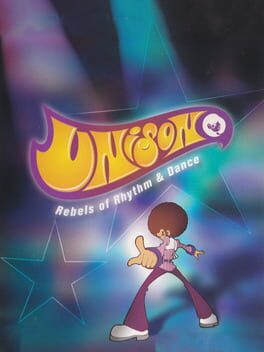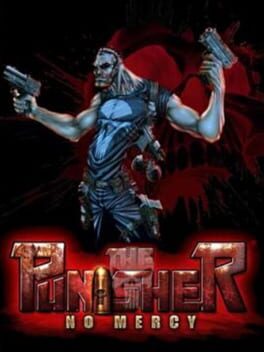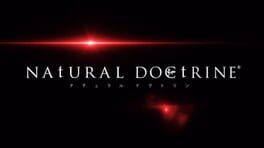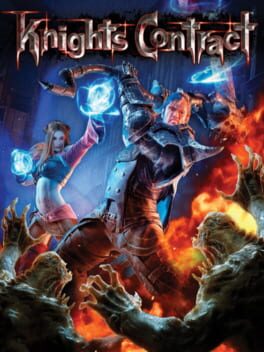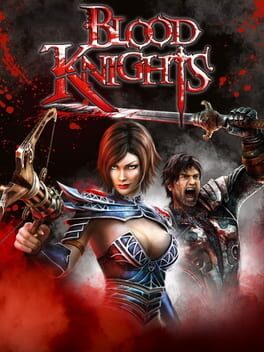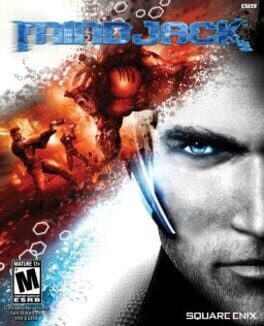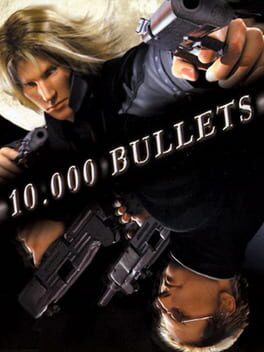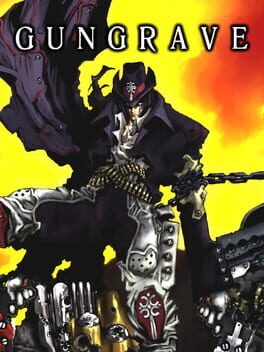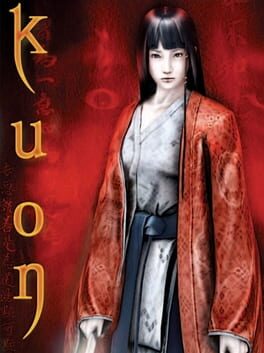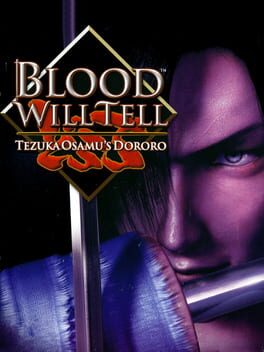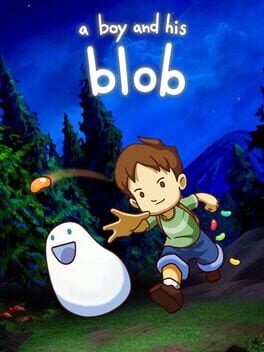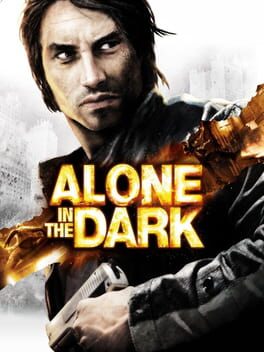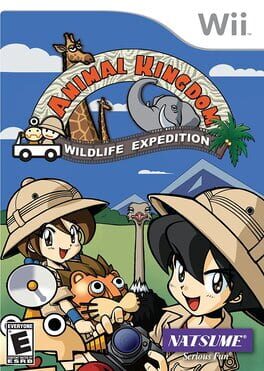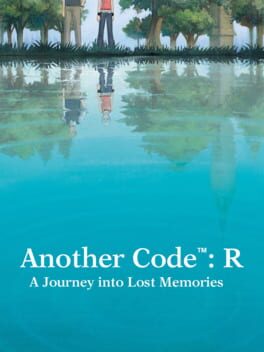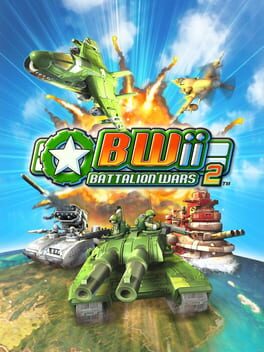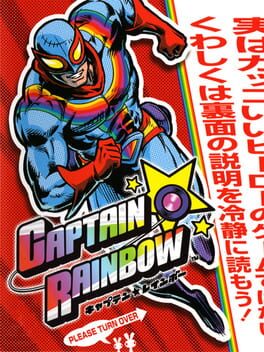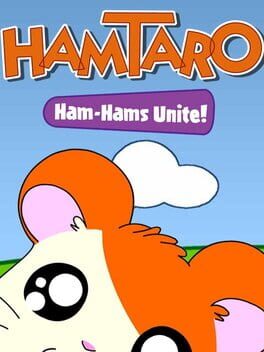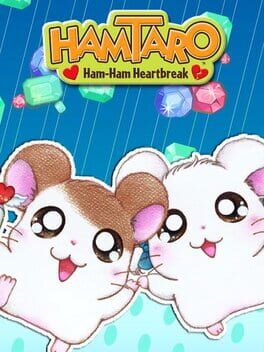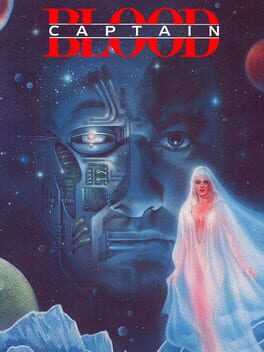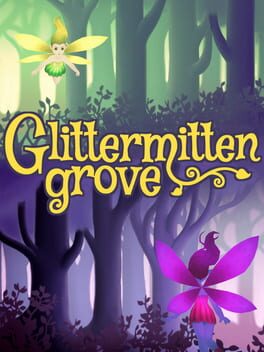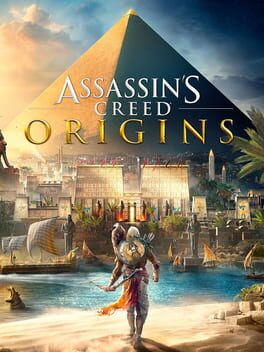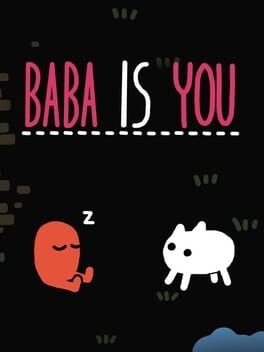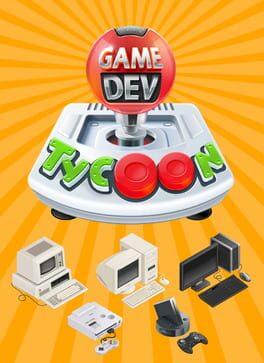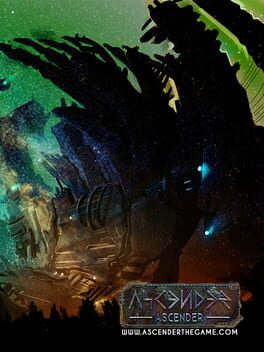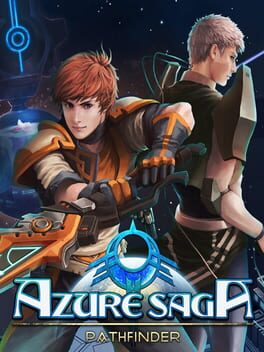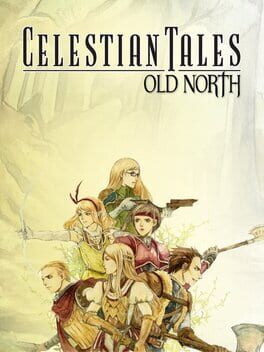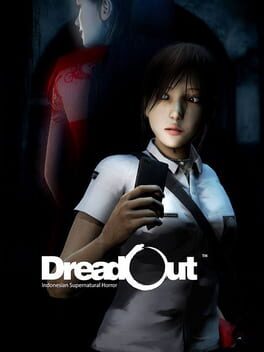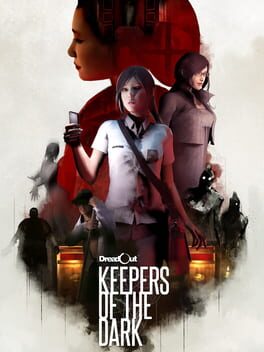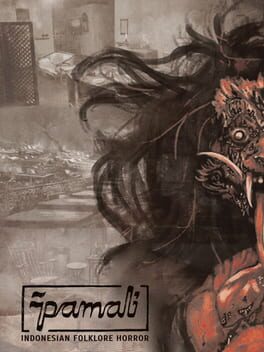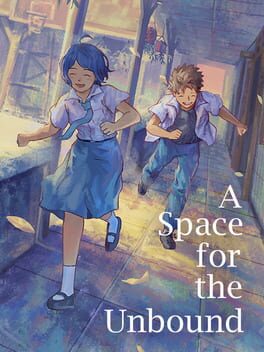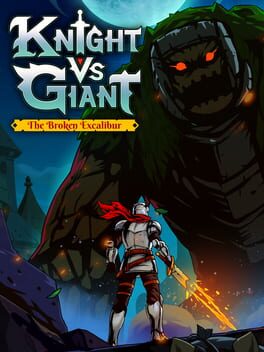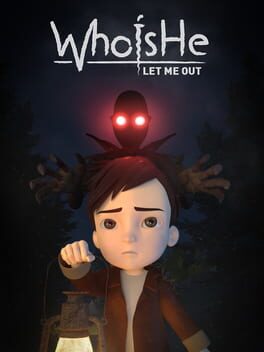Zzlazarus
12 reviews liked by Zzlazarus
E.X. Troopers
2012
I IMPLORE anybody with a homebrewed 3DS or PlayStation 3 to get this game, because it is just so much genuine fun. A spin-off of the short lived Lost Planet franchise, it features series staples such as survival on a frozen planet and an endless onslaught of alien insects known as the Akrid, but the anime bullshit is cranked up to 500. As if the first two games weren't hammy enough, EX Troopers leaves them in the dust by codefiying itself in anime. The gameplay isn't the same as the first two Lost Planet games, due to the absence of actually piloting Vital Suits, as well as the lack of vertical mobility, but it makes up for it with snappy and satisfying arcade shooting with a simple to learn gameplay loop. The plot itself is also anime as fuck, even if it does play it safe compared to other anime games. The plot takes heavy cues from shonen heavyhitters such as Naruto, Soul Eater, and Bleach, as well as mecha such as Eureka Seven and Mobile Fighter G Gundam, where the main protagonist Bren Turner enters an academy dedicated to training soldiers to become part of NEVEC, the corporate conglomerate responsible for colonization on EDN III. As he enters the academy, he sets his sights on becoming the best at the academy, earning both the awe and ire of his peers, and causing friends of all kinds to surround him as he makes his way to the top, all the while uncovering a more sinister plot behind the events occurring at the academy. Despite its simplicity, it's very enjoyable to sit through and the Japanese voice acting does wonders to bring the vibrant characters alive. There's also a high quality fan localization out right now (available here: https://fantranslators.info/projects/e-x-troopers/) that translates everything into English from its original language in Japanese, and even if you can't go through the effort to patch a 3DS game cartridge or PS3 Blu-Ray disc, there is .cia files for Citra and a ROM for RPCS3 available so you can put the patch over it, and experience the game for yourself on PC. I highly recommend you do whatever it takes to play this game, because it was a sorely missed opportunity on Capcom's part, and it will be a missed opportunity on your part too if you don't.
in a genre well known for conservative sensibilities and a dearth of anthropological and cultural respect, as well as voyeuristic and hedonistic death tourism, blood on the sand stands out as self-aggrandizing, maximalist, and bordering on parodic in a way very few tend to be. a subversive and stately satire this is not, but the mere insertion of 50 cent into a wartorn setting when his previous digital outing humbly involved enacting vengeance against the american criminal underworld says as much about the aughts zeitgeist as our proclivities in the horror genre during that era does. maybe this buries the lede somewhat, because one of the most important facts about this game was only revealed relatively recently, but blood on the sand was alleged to have started as a tom clancy game recently; conflicting reports from development suggested its yarn was spun from a failed covert-one project, an adaptation of bourne trilogy alum robert ludlum's ideas. one article implicitly posits that these prospective titles were stages in a continuum prior to publisher vivendi's decision to use their convenient rights to 50 cent, although its also possible the use of tom clancy was shorthand for use in an interview given that vivendi didn’t have the license to adapt tom clancy’s works. whatever the case, this largely explains the game's constituent elements – fighting tooth and nail through a wartorn middle-east setting, so familiar to video games and film of the era, recontextualized to fit 50 cent.
other games centered around rappers are designed around an understanding of their core ethos; the wu-tang clan, with their sound representing an evocative mix of east asian and black culture, with particular reverence afforded towards martial arts, found themselves on the psx with 1999’s shaolin style, a fighting game that literalized and made tangible the groups stage personae and the aesthetic undercurrents in their discography. or take the def jam franchise, which takes the feuds, the aggression, and the machismo of the music industry during that time and channels that raw energy into a wrestling game developed by AKI. and this was mythological for its cast – there’s an interview with method man that always makes me crack up where he essentially says that all he cared about was having the hottest finishing move in the game. even rap jam volume one, a basketball game for the snes, plays to some of these sensibilities by essentially offering basketball Without Limits. coolio isn’t afraid to throw hands there. rims creak under the weight of dunks from impossible heights. it’s all performance centered around culture, identity, reputation.
what makes 50 cent unique in this regard, especially as far as performance and cultural mythology is concerned, is the now-infamous, oft-referenced incident in which, early in his career, he was shot nine times in south jamaica allegedly as the result of the release of his controversial song, ‘ghetto qu’ran’. ‘bulletproof’ isn’t just the title of a licensed video game, it’s part and parcel of the 50 cent brand and his identity, referenced often in his discography and utilized to demonstrate the artists grit and countercultural edge. the violence of his work is therefore afforded numerous dimensions given his firsthand experience with this kind of trauma, which in turn represents part of the appeal, that kind of verisimilitude. certainly, bulletproof (the game) plays into this mythology. where fighting games seem the natural route for the wu-tang clan, 50 cents life and identity could only ever have seen translation into ludology through firefights. it’s a bit macabre but totally in line with his career sensibilities.
blood on the sand, then, seemingly represents a reactionary inverse to bulletproof’s simple reiteration and expression of the 50 cent persona. instead of playing a nameless, hardened soldier fighting on behalf of an imperialist agenda in the middle east as is the standard in this format, that voiceless force of nature has been replaced by 50 cent, who can easily, cynically, be read as the all-american invulnerable supersoldier - one who built his brand from the ashes of derelict poverty. y'know, bootstraps, the american way. but the game rejects any easy textual understanding. yes, 50, narratively and mechanically, is totally committed as an agent of destruction and havoc, but his quest primarily pits him against a rogues gallery of self-interested judas archetypes; 50 is naturally distrustful and seldom offers aid, only so long as his goals align with other parties. and these rivals are all configured as gangsters, entrepreneurs, those seeking profits. an early conversation is helpful in this regard, in which 50 cent claims new yorks streets are entirely owned by gangsters; his conversational partner claims the middle eastern region theyre in is controlled by organized crime on a scale surpassing that of new york. the kind of americanized conception of gang warfare transplanted onto the middle east revealed through this dick-measuring contest is the crux of blood on the sand’s text, additionally reflected in its color coded enemy design, evoking gang colors and affiliation more than it necessarily does terrorism, as well as in its environmental design, like a hyper-americanized strip club sticking out like a sore thumb. the connotations of the war on terror are there but one gets the sense that blood on the sand uses those familiar political and genre elements as (unfortunately) familiarized backdrop and setting moreso than it does to convey a straightforward narrative about combatting jihadist insurgents.
another thing setting blood on the sand apart from its milieu is 50’s characterization – this alone isn’t revelatory but it’s in stark contrast to others in the genre. uncharted is allowed to disguise its lack of humanity through a constant assault of quips and ironic insincerity, as protagonist nathan drake pilfers the remains of ancient civilizations for profit and slaughters anyone in his path, reenacting colonial tendencies in the process for the sake of ‘a good time’. and this is a constant thread in all the games, encountering ancient societies where something went wrong and the enemy type shifts towards supernatural, impossibly advanced yet primitive ghoul caricatures. these misanthropic attributes are not alone to uncharted, as several other adventure shooters share much of the same problems. perhaps the most brutally honest any of these games has ever been is when you lead a no-holds barred defence against enemies laying siege to a fast food establishment in modern warfare 2.
50 cent, meanwhile, is unceasingly committed to securing the bag – there’s no pretense of nobility or honor here, but he will have banter with the rest of g-unit, air his frustrations with the constantly spiraling nature of his journey to get a skull back, and discuss the setting and architecture with his allies. it's all a matter of debt collection from shady benefactors who continually steer you in the wrong direction, and 50 is content to follow this labyrinthine design so long as payments still on the table. so, blood on the sands rejection of its central middle eastern analogue transforms the game into an interpretive assault on the restraints and foibles of the modern music industry. the whole plot is kickstarted when 50 cents contract isn’t honoured and he isn’t paid a cool 10 mil for a concert he held; a diamond-encrusted skull is offered as a means of recompensation, which becomes the driving force of the narrative and its collection becomes the locus for his rampage. thus, it can be said that blood on the sand is very simply a game about honoring the work of artists, and of fairly compensating them for their labour. one of many traitorous parties in-game is a paramilitary squad who force 50 into committing a heist and then attempt to take the payout for themselves; during the subsequent boss battle, the squad’s commander, voiced by lance reddick, tells 50 to walk away with his life and squander the profit for everyone’s sake. after all, his nephew’s an ardent fan, and 50 should chalk this mishap up to experience before he gets hurt. this read is bolstered by a couple of tidbits: the knowledge that, according to 50, blood on the sand is in part a tie-in to g-unit’s 2008 damning ‘elephant in the sand’ mixtape, which followed a longstanding feud between 50 cent on the one hand and ja rule and fat joe on the other hand, his peers in the industry. additionally, a great deal of blood on the sand’s visual identity and palette was inspired by the film blood diamond of all things, which of course involves atrocities in sierra leone revolving around the highly inhumane and exploitative diamond mining trade, all farmed during a war zone. continuing the read, theres obviously more than a few unsavoury statements one could make about the music industry in this light. that kind of exploitation -> reclamation loop was something i felt that was common to the games mini-arcs.
one other film i didn’t expect to weigh on my mind so heavily over the course of my playthrough was uncut gems! the image of 50 holding a diamond encrusted skull, a symbol of his labour and his persona, is downright operatic. it parallels kevin garnetts role in uncut gems, who perceives entire iridescent universes, with his lived experiences superimposed and rapidly cutting in and out of frame, and the metaphorical blood, sweat, and tears of many in an unethically sourced black opal. he becomes determined, obsessed even, to hold on the alluring gem, as he considers it a symbolic representation of wealth, fortune, and physical prowess - like a good luck charm. clearly, the skull, with its own implied sordid history, has similar value for 50 as well - it's considered priceless, but his intentions with it are undisclosed for the entire narrative. he simply wants it. both fictionalized portrayals of these 'characters' are in conversation with their mythologized roles in culture, but where uncut gems is concerned with destiny, stability, and fortune, with questions of materialism and faith at the forefront, blood on the sand makes no such appeals to higher powers – 50 is, after all, bulletproof, and the game is more than happy to let him manifest his own payback narrative, the gods be damned. the exploitation of miners in uncut gems’ prologue frames its narrative, but through bombast and hyperbole 50 uses the lens of a militarized zeitgeist to take revenge on his own enemies in the industry, both real and perceived - which serves its purpose as a reclamation narrative.
perhaps these are some highbrow, navel-gazey interpretations and readings on why you should play blood on the sand. but you wanna know the lowbrow, crass, real reason? the game’s just fun as hell. even leaving aside its aesthetics this is a white-knuckled responsive third person shooter, rapidly maneuvering you through conflict after conflict in an arcade setting with more of a semblance of actual encounter design than the majority of its peers. these mechanics are framed by an unrelenting tempo of macro and micro goals in visually distinguishable and legible skirmishes while aiming for combo chains and high scores. 50 cent and devil may cry’s dante alike both see the value of taunting enemies to bolster their ranks and to style on their enemies. 50 cent basically gets heat moves as well, and he can activate max paynes bullet time. this bullet time mechanic is known as gangsta fire, and it essentially makes 50 move faster while also slowing down time. its meter is quite strict and can only reliably be filled up quickly by means of stage pickups, meaning that there's a balancing act between meter preservation and combo priority at all times. and it’s all set to a wide selection of 50 cents discography, freely customizable in the games playlist function. even where the game fails in its design from time to time (optional scoring goals are too often intertwined with the overt objective of the mission, thus not pushing players out of their comfort zone; an overabundance of helicopter encounters, charmingly explained away by 50 cent’s son’s obsession with them and request to include them; gold ranks are almost impossible to acquire outside of hard mode), the experience of listening to P.I.M.P. while racking up the body count with a mossberg and with a LMG as 50 hurls shittalk is unlike anything else in the medium. but i think this paragraph is fairly obvious to anyone who’s played this. so here’s my consensus: i was grinning ear to ear the whole time. this is by far one of the finest exploitation genre games you can play, bordering on high art. in a games industry that now lies about american war crimes, and in a music industry dominated by spotify, blood on the sand is one of the last bulwarks of honesty left. hands down the most culturally significant response to 9/11 right here in this game.
(this game invokes dmca's ire so almost all the gameplay footage you can find of it online doesnt have the soundtrack blaring. totally misrepresents the intensity of the experience imo! no 21 questions or candy shop though...)
other games centered around rappers are designed around an understanding of their core ethos; the wu-tang clan, with their sound representing an evocative mix of east asian and black culture, with particular reverence afforded towards martial arts, found themselves on the psx with 1999’s shaolin style, a fighting game that literalized and made tangible the groups stage personae and the aesthetic undercurrents in their discography. or take the def jam franchise, which takes the feuds, the aggression, and the machismo of the music industry during that time and channels that raw energy into a wrestling game developed by AKI. and this was mythological for its cast – there’s an interview with method man that always makes me crack up where he essentially says that all he cared about was having the hottest finishing move in the game. even rap jam volume one, a basketball game for the snes, plays to some of these sensibilities by essentially offering basketball Without Limits. coolio isn’t afraid to throw hands there. rims creak under the weight of dunks from impossible heights. it’s all performance centered around culture, identity, reputation.
what makes 50 cent unique in this regard, especially as far as performance and cultural mythology is concerned, is the now-infamous, oft-referenced incident in which, early in his career, he was shot nine times in south jamaica allegedly as the result of the release of his controversial song, ‘ghetto qu’ran’. ‘bulletproof’ isn’t just the title of a licensed video game, it’s part and parcel of the 50 cent brand and his identity, referenced often in his discography and utilized to demonstrate the artists grit and countercultural edge. the violence of his work is therefore afforded numerous dimensions given his firsthand experience with this kind of trauma, which in turn represents part of the appeal, that kind of verisimilitude. certainly, bulletproof (the game) plays into this mythology. where fighting games seem the natural route for the wu-tang clan, 50 cents life and identity could only ever have seen translation into ludology through firefights. it’s a bit macabre but totally in line with his career sensibilities.
blood on the sand, then, seemingly represents a reactionary inverse to bulletproof’s simple reiteration and expression of the 50 cent persona. instead of playing a nameless, hardened soldier fighting on behalf of an imperialist agenda in the middle east as is the standard in this format, that voiceless force of nature has been replaced by 50 cent, who can easily, cynically, be read as the all-american invulnerable supersoldier - one who built his brand from the ashes of derelict poverty. y'know, bootstraps, the american way. but the game rejects any easy textual understanding. yes, 50, narratively and mechanically, is totally committed as an agent of destruction and havoc, but his quest primarily pits him against a rogues gallery of self-interested judas archetypes; 50 is naturally distrustful and seldom offers aid, only so long as his goals align with other parties. and these rivals are all configured as gangsters, entrepreneurs, those seeking profits. an early conversation is helpful in this regard, in which 50 cent claims new yorks streets are entirely owned by gangsters; his conversational partner claims the middle eastern region theyre in is controlled by organized crime on a scale surpassing that of new york. the kind of americanized conception of gang warfare transplanted onto the middle east revealed through this dick-measuring contest is the crux of blood on the sand’s text, additionally reflected in its color coded enemy design, evoking gang colors and affiliation more than it necessarily does terrorism, as well as in its environmental design, like a hyper-americanized strip club sticking out like a sore thumb. the connotations of the war on terror are there but one gets the sense that blood on the sand uses those familiar political and genre elements as (unfortunately) familiarized backdrop and setting moreso than it does to convey a straightforward narrative about combatting jihadist insurgents.
another thing setting blood on the sand apart from its milieu is 50’s characterization – this alone isn’t revelatory but it’s in stark contrast to others in the genre. uncharted is allowed to disguise its lack of humanity through a constant assault of quips and ironic insincerity, as protagonist nathan drake pilfers the remains of ancient civilizations for profit and slaughters anyone in his path, reenacting colonial tendencies in the process for the sake of ‘a good time’. and this is a constant thread in all the games, encountering ancient societies where something went wrong and the enemy type shifts towards supernatural, impossibly advanced yet primitive ghoul caricatures. these misanthropic attributes are not alone to uncharted, as several other adventure shooters share much of the same problems. perhaps the most brutally honest any of these games has ever been is when you lead a no-holds barred defence against enemies laying siege to a fast food establishment in modern warfare 2.
50 cent, meanwhile, is unceasingly committed to securing the bag – there’s no pretense of nobility or honor here, but he will have banter with the rest of g-unit, air his frustrations with the constantly spiraling nature of his journey to get a skull back, and discuss the setting and architecture with his allies. it's all a matter of debt collection from shady benefactors who continually steer you in the wrong direction, and 50 is content to follow this labyrinthine design so long as payments still on the table. so, blood on the sands rejection of its central middle eastern analogue transforms the game into an interpretive assault on the restraints and foibles of the modern music industry. the whole plot is kickstarted when 50 cents contract isn’t honoured and he isn’t paid a cool 10 mil for a concert he held; a diamond-encrusted skull is offered as a means of recompensation, which becomes the driving force of the narrative and its collection becomes the locus for his rampage. thus, it can be said that blood on the sand is very simply a game about honoring the work of artists, and of fairly compensating them for their labour. one of many traitorous parties in-game is a paramilitary squad who force 50 into committing a heist and then attempt to take the payout for themselves; during the subsequent boss battle, the squad’s commander, voiced by lance reddick, tells 50 to walk away with his life and squander the profit for everyone’s sake. after all, his nephew’s an ardent fan, and 50 should chalk this mishap up to experience before he gets hurt. this read is bolstered by a couple of tidbits: the knowledge that, according to 50, blood on the sand is in part a tie-in to g-unit’s 2008 damning ‘elephant in the sand’ mixtape, which followed a longstanding feud between 50 cent on the one hand and ja rule and fat joe on the other hand, his peers in the industry. additionally, a great deal of blood on the sand’s visual identity and palette was inspired by the film blood diamond of all things, which of course involves atrocities in sierra leone revolving around the highly inhumane and exploitative diamond mining trade, all farmed during a war zone. continuing the read, theres obviously more than a few unsavoury statements one could make about the music industry in this light. that kind of exploitation -> reclamation loop was something i felt that was common to the games mini-arcs.
one other film i didn’t expect to weigh on my mind so heavily over the course of my playthrough was uncut gems! the image of 50 holding a diamond encrusted skull, a symbol of his labour and his persona, is downright operatic. it parallels kevin garnetts role in uncut gems, who perceives entire iridescent universes, with his lived experiences superimposed and rapidly cutting in and out of frame, and the metaphorical blood, sweat, and tears of many in an unethically sourced black opal. he becomes determined, obsessed even, to hold on the alluring gem, as he considers it a symbolic representation of wealth, fortune, and physical prowess - like a good luck charm. clearly, the skull, with its own implied sordid history, has similar value for 50 as well - it's considered priceless, but his intentions with it are undisclosed for the entire narrative. he simply wants it. both fictionalized portrayals of these 'characters' are in conversation with their mythologized roles in culture, but where uncut gems is concerned with destiny, stability, and fortune, with questions of materialism and faith at the forefront, blood on the sand makes no such appeals to higher powers – 50 is, after all, bulletproof, and the game is more than happy to let him manifest his own payback narrative, the gods be damned. the exploitation of miners in uncut gems’ prologue frames its narrative, but through bombast and hyperbole 50 uses the lens of a militarized zeitgeist to take revenge on his own enemies in the industry, both real and perceived - which serves its purpose as a reclamation narrative.
perhaps these are some highbrow, navel-gazey interpretations and readings on why you should play blood on the sand. but you wanna know the lowbrow, crass, real reason? the game’s just fun as hell. even leaving aside its aesthetics this is a white-knuckled responsive third person shooter, rapidly maneuvering you through conflict after conflict in an arcade setting with more of a semblance of actual encounter design than the majority of its peers. these mechanics are framed by an unrelenting tempo of macro and micro goals in visually distinguishable and legible skirmishes while aiming for combo chains and high scores. 50 cent and devil may cry’s dante alike both see the value of taunting enemies to bolster their ranks and to style on their enemies. 50 cent basically gets heat moves as well, and he can activate max paynes bullet time. this bullet time mechanic is known as gangsta fire, and it essentially makes 50 move faster while also slowing down time. its meter is quite strict and can only reliably be filled up quickly by means of stage pickups, meaning that there's a balancing act between meter preservation and combo priority at all times. and it’s all set to a wide selection of 50 cents discography, freely customizable in the games playlist function. even where the game fails in its design from time to time (optional scoring goals are too often intertwined with the overt objective of the mission, thus not pushing players out of their comfort zone; an overabundance of helicopter encounters, charmingly explained away by 50 cent’s son’s obsession with them and request to include them; gold ranks are almost impossible to acquire outside of hard mode), the experience of listening to P.I.M.P. while racking up the body count with a mossberg and with a LMG as 50 hurls shittalk is unlike anything else in the medium. but i think this paragraph is fairly obvious to anyone who’s played this. so here’s my consensus: i was grinning ear to ear the whole time. this is by far one of the finest exploitation genre games you can play, bordering on high art. in a games industry that now lies about american war crimes, and in a music industry dominated by spotify, blood on the sand is one of the last bulwarks of honesty left. hands down the most culturally significant response to 9/11 right here in this game.
(this game invokes dmca's ire so almost all the gameplay footage you can find of it online doesnt have the soundtrack blaring. totally misrepresents the intensity of the experience imo! no 21 questions or candy shop though...)
Spec Ops: The Line
2012
Spec Ops: The Line: The most mediocre of gameplay then has the gall to huff its own farts right in front of you, but really, I think its impactful story is still pretty unique over a decade later and helps keep a game - that probably should be pretty stale - somewhat fresh.
First, its issues. You can just launch right into Spec Ops: The Line if you want. But should you want to, say, adjust the mouse sensitivity and disable acceleration, or disable motion blur, maybe cap the frame rate? You know, normal PC stuff? You're going to have to become a bit of a CSI: Miami writing level-computer hacker for a minute. You have to download tools to decrypt the .ini files before you can even read them (unless you're fluent in Wingdings), adjust them from there, then encrypt them again. Absurdity. Why are these files encrypted?!
The vertical sensitivity when using a scope is terrible and there's just no fixing that.
You'll also want to block the .exe in your Windows Defender Firewall, as every time you boot up the game it sits at a “Checking for Updates” screen for far longer than it should, just waiting for files that'll never be there. Or, I suppose, you could just beat it in one sitting so you'd only see that screen once. The game isn't that long.
But hey: no hard crashes! So that's swell.
How's it look and sound? Pretty good, nothing super special. Great textures, pretty nice shadows, and the animations can seem a bit robotic, but definitely make sense given the release date. There's a couple times you get to really 'take in' the ruined city of Dubai where a dolly zoom-like effect is used to create a good sense of awe and vertigo. The sandstorms you run into look good and creep in slowly, creating a nice sense of tension, and they sound nice, too.
All the other sounds, like the guns, are just serviceable aside from Nolan “Everybody is Nathan Drake” North's performance, which is very commendable.
The gameplay is like a cheap Gears of War clone, very lifeless and repetitive. You run to cover, pop up for easy headshots, and if you're shot you stay down until you see colors again, then rinse and repeat. There's a chopper gunner segment to 'mix it up' but it sucks and you'll hate that it's in there twice. No, the meta joke doesn't make it worth it.
You can issue your squad to kill targets, but you have to aim your reticle on who you want dead in order to issue the command. Unless it's a heavy-armored unit or a turret gunner, it's almost certainly easier to just pull the trigger yourself.
There's not much weapon variety, pretty much exactly what you'd expect to see (a few rifles, a couple shotguns and SMGs, and pistols you'll never use), though the kill-tracking achievements may subliminally incentivize you to vary up your firearm choices, like they did me.
What keeps this game interesting and worth checking out in my opinion is its story. It's pretty divisive: you'll either love that they went from something different here or you'll wonder if you've got a case for false advertising. If you've played the game multiple times like me, maybe you've even felt both. I won't spoil anything, but I'll say I hated this when I first played it years ago and now find it to be an interesting change of pace.
Supposedly the developers are kind of pompous and believe something along the lines of “the only way to win is to not play”, but this is a video game: if you bought it, you're going to play it. In the game, you're never really given any choice, either, it's a pretty linear experience. In the years since my first playthrough and now, I'd say I'm just more comfortable with separating myself from the character, a concept pretty integral to the game's intended experience. It's very much deliberate for you to question “your” own actions and, like Walker would, seek redemption. What has this all been for? Do you feel like a hero yet?
Now, I can just play through it and smirk at stuff like “Mission Objective: Obey.” Obviously, it helps that I knew exactly what I was walking into here, too. That first time through Spec Ops: The Line is a pretty ambitious gaming experience to develop, though, and I think they did a pretty good job with that. The Epilogue mission here is a damn fine way to end a game, and though very dark, I really enjoyed it.
I know the term “iconic” gets tossed around pretty loosely these days, but I think the 'white phosphorous' scene in this game actually fits it. Walker's story is one very, very different from other military shooters you see and I think it's worth remembering Spec Ops: The Line for providing some outside-the-box war crimes for you to enjoy. It's not the best game ever, but I still recommend it for that.
"There's always a choice!"
”No... there's really not.”
First, its issues. You can just launch right into Spec Ops: The Line if you want. But should you want to, say, adjust the mouse sensitivity and disable acceleration, or disable motion blur, maybe cap the frame rate? You know, normal PC stuff? You're going to have to become a bit of a CSI: Miami writing level-computer hacker for a minute. You have to download tools to decrypt the .ini files before you can even read them (unless you're fluent in Wingdings), adjust them from there, then encrypt them again. Absurdity. Why are these files encrypted?!
The vertical sensitivity when using a scope is terrible and there's just no fixing that.
You'll also want to block the .exe in your Windows Defender Firewall, as every time you boot up the game it sits at a “Checking for Updates” screen for far longer than it should, just waiting for files that'll never be there. Or, I suppose, you could just beat it in one sitting so you'd only see that screen once. The game isn't that long.
But hey: no hard crashes! So that's swell.
How's it look and sound? Pretty good, nothing super special. Great textures, pretty nice shadows, and the animations can seem a bit robotic, but definitely make sense given the release date. There's a couple times you get to really 'take in' the ruined city of Dubai where a dolly zoom-like effect is used to create a good sense of awe and vertigo. The sandstorms you run into look good and creep in slowly, creating a nice sense of tension, and they sound nice, too.
All the other sounds, like the guns, are just serviceable aside from Nolan “Everybody is Nathan Drake” North's performance, which is very commendable.
The gameplay is like a cheap Gears of War clone, very lifeless and repetitive. You run to cover, pop up for easy headshots, and if you're shot you stay down until you see colors again, then rinse and repeat. There's a chopper gunner segment to 'mix it up' but it sucks and you'll hate that it's in there twice. No, the meta joke doesn't make it worth it.
You can issue your squad to kill targets, but you have to aim your reticle on who you want dead in order to issue the command. Unless it's a heavy-armored unit or a turret gunner, it's almost certainly easier to just pull the trigger yourself.
There's not much weapon variety, pretty much exactly what you'd expect to see (a few rifles, a couple shotguns and SMGs, and pistols you'll never use), though the kill-tracking achievements may subliminally incentivize you to vary up your firearm choices, like they did me.
What keeps this game interesting and worth checking out in my opinion is its story. It's pretty divisive: you'll either love that they went from something different here or you'll wonder if you've got a case for false advertising. If you've played the game multiple times like me, maybe you've even felt both. I won't spoil anything, but I'll say I hated this when I first played it years ago and now find it to be an interesting change of pace.
Supposedly the developers are kind of pompous and believe something along the lines of “the only way to win is to not play”, but this is a video game: if you bought it, you're going to play it. In the game, you're never really given any choice, either, it's a pretty linear experience. In the years since my first playthrough and now, I'd say I'm just more comfortable with separating myself from the character, a concept pretty integral to the game's intended experience. It's very much deliberate for you to question “your” own actions and, like Walker would, seek redemption. What has this all been for? Do you feel like a hero yet?
Now, I can just play through it and smirk at stuff like “Mission Objective: Obey.” Obviously, it helps that I knew exactly what I was walking into here, too. That first time through Spec Ops: The Line is a pretty ambitious gaming experience to develop, though, and I think they did a pretty good job with that. The Epilogue mission here is a damn fine way to end a game, and though very dark, I really enjoyed it.
I know the term “iconic” gets tossed around pretty loosely these days, but I think the 'white phosphorous' scene in this game actually fits it. Walker's story is one very, very different from other military shooters you see and I think it's worth remembering Spec Ops: The Line for providing some outside-the-box war crimes for you to enjoy. It's not the best game ever, but I still recommend it for that.
"There's always a choice!"
”No... there's really not.”
Entropy: Zero
2017
A really nice concept, playing as part of the Civil Protection is a nice idea, and it's executed well! Killing civilians and rebels instead of the usual Combine troops makes a huge difference in my opinion. However, I feel like it's not explored further, and what is explored, are confusing puzzles that I had to look up the solutions of some of them online. Anyways, this is a good foundation for the sequel, which I heard is better.
Entropy: Zero
2017
ENG: Mod in which we embody a metrocop of Civil Protection that, by a train derailment, is involved and lost in the abandoned City 10.
There is no doubt that this mod points to an aesthetic never seen before in the Half-Life saga. With that cold and oppressive tones preponderant in the snow that hint at the loneliness that holds our protagonist. It's us against the rebels, the vortigaunts and the environment itself.
I also like how stories are told mostly through the visual landscape rather than the characters. That is to say, Half-Life is a saga that has always been characterized by having a strong environmental narrative. But in Entropy: Zero this stands out more by having almost no characters since, as I said before, they are all enemies.
In short, the objective of the game is to put us in the shoes of a villain of this saga, and it succeeds quite well. At our disposal we have stun batons and manhacks. On the other hand, our protagonist is dedicated to making sarcastic and biting comments about the situations around him. Matching the personality of someone who would join the Combine. And that's enough.
ESP: Mod en el cual encarnamos a un metrocop de Protección Civil que, por un descarrilamiento de un tren, se ve envuelto y perdido en la abandonada Ciudad 10.
No cabe duda que este mod apunta a una estética nunca antes vista en la saga Half-Life. Con esa tonos fríos y opresivos preponderantes en la nieve que dejan entrever la soledad que atiene nuestro protagonista. Somos nosotros contra los rebeldes, los vortigaunts y el propio entorno.
También me gusta como se cuentan historias sobre todo a través del paisaje visual más que por el de personajes. Es decir, Half-Life es una saga que siempre se ha caracterizado por tener una fuerte narrativa ambiental. Pero en Entropy: Zero esto se destaca más al no tener casi personajes ya que, como dije antes, son todos enemigos.
En fin, que el objetivo del juego es ponernos en los zapatos de un villano de esta saga, y lo consigue bastante bien. A nuestra disposición tenemos bastones de aturdimiento y manhacks. Por otro lado, nuestro protagonista se dedica a hacer comentarios sarcásticos y mordaces acerca de las situaciones que lo rodean. Coincidiendo con la personalidad de alguien que se uniría a los Combine. Y eso es suficiente.
There is no doubt that this mod points to an aesthetic never seen before in the Half-Life saga. With that cold and oppressive tones preponderant in the snow that hint at the loneliness that holds our protagonist. It's us against the rebels, the vortigaunts and the environment itself.
I also like how stories are told mostly through the visual landscape rather than the characters. That is to say, Half-Life is a saga that has always been characterized by having a strong environmental narrative. But in Entropy: Zero this stands out more by having almost no characters since, as I said before, they are all enemies.
In short, the objective of the game is to put us in the shoes of a villain of this saga, and it succeeds quite well. At our disposal we have stun batons and manhacks. On the other hand, our protagonist is dedicated to making sarcastic and biting comments about the situations around him. Matching the personality of someone who would join the Combine. And that's enough.
ESP: Mod en el cual encarnamos a un metrocop de Protección Civil que, por un descarrilamiento de un tren, se ve envuelto y perdido en la abandonada Ciudad 10.
No cabe duda que este mod apunta a una estética nunca antes vista en la saga Half-Life. Con esa tonos fríos y opresivos preponderantes en la nieve que dejan entrever la soledad que atiene nuestro protagonista. Somos nosotros contra los rebeldes, los vortigaunts y el propio entorno.
También me gusta como se cuentan historias sobre todo a través del paisaje visual más que por el de personajes. Es decir, Half-Life es una saga que siempre se ha caracterizado por tener una fuerte narrativa ambiental. Pero en Entropy: Zero esto se destaca más al no tener casi personajes ya que, como dije antes, son todos enemigos.
En fin, que el objetivo del juego es ponernos en los zapatos de un villano de esta saga, y lo consigue bastante bien. A nuestra disposición tenemos bastones de aturdimiento y manhacks. Por otro lado, nuestro protagonista se dedica a hacer comentarios sarcásticos y mordaces acerca de las situaciones que lo rodean. Coincidiendo con la personalidad de alguien que se uniría a los Combine. Y eso es suficiente.
Entropy: Zero
2017
I can see why this is classified as one of the better HL2 mods; the atmosphere is great, the combat is more weighty than the vanilla game due to the premise, and some of the set pieces are incredibly interesting.
It's not without flaws, though; both of the bosses are bad, ranging from slightly annoying to not even knowing if you're progressing till it's already over, and playing on the difficulty that makes the game most interesting leads to it being so wholly unfair that anyone who played on it would be forgiven for either cheating or giving up at some point.
It's not without flaws, though; both of the bosses are bad, ranging from slightly annoying to not even knowing if you're progressing till it's already over, and playing on the difficulty that makes the game most interesting leads to it being so wholly unfair that anyone who played on it would be forgiven for either cheating or giving up at some point.
Left Alive
2019
TL;DR: you could build a mountain out of the complaints thrown at this game, but you'd only get a molehill out of the ones that are actually valid
left alive isn't metal gear. it has a fair amount of low budget jank, but outside of the inconsistent performance, some weird animations and a few ai quirks here and there, it works as intended (if you can handle literally anything made by cavia, you'll be fine.) that said - depending on your playstyle and willingness to experiment, the experience is either gonna be totally exhilarating or completely exhausting
let's dispel the myth once and for all: not only is left alive not metal gear - it's not even a stealth game. enemies are armed to the teeth. these aren't dudes in military garb - they're soldiers with armored exosuits. it'd be stupid if you could just 'stealth takedown' them. so what's the solution, especially on higher difficulties? (read: any one that isn't the casual mode that they patched in for people who refused to play the game properly)
RUN LIKE A BITCH
oh, but if only i could easily obtain tools to distract or disarm guards to avoid the constant gunfire. if only i could plant traps or obscure my trail with smoke bombs. if only i could slide tackle into enemies while sprinting as if this were vanquish and knock them on their asses. oh wait - i can do all of that. soldiers are spongy, but the sheer amount of ways you can manipulate them justifies that. sure, it'll take eight headshots to kill someone, but what about when while they're too busy shaking off a molotov cocktail to retaliate? or trying to dismantle a barb wire trap?
on paper it might seem like you've got all the tools you need to dispose of anything, but ammo is fairly scarce and you can't carry much of it. maps are visited under different circumstances by all three characters and the loot in each area is finite. stocking up on ammo or all the scrap you can find might sound like a good idea at first, but you could be giving your other characters a much harder time for lack of preparation
narratively, i don't have a lot to say without spoilers. as a front mission fan, it's certainly cool to dicaprio_point.gif at all the familiar terminology and factions. definitely feels like there could've been more on the narrative front, but what's here is cool and the cast carrying things is surprisingly high profile - even nigh animation-less sidequest npcs are absurdly well voiced. the morality decisions are also interesting and fairly pivotal (ranging from survivors killing themselves because you told them the wrong things, to actually important characters dying unjustly for your actions). i like that what you get out of the narrative is reflective of what you put into it. moreover, i appreciate that because this is a front mission game i can pilot wanzers. that's pretty cool too
look. if you're still here then your curiosity must be sparked in some manner. i'll be frank: this game gets cheap. i bought it for $6 and i'd have gladly paid multiples of that. there are great ideas here and they're not even deeply buried under jank. this is just a fun and unique experience through and through. easily recommended to anyone with passing interest and an open mind. play on the hopeless difficulty too - it isn't - it puts you in the right mentality to get through novo slava as intended. don't sweat the side missions too much - they're tough and staying alive is hard enough as is
moral of this story: never fucking trust game critics or youtube funnymen. seriously. most of the negative reviews on steam have less than an hour of playtime and yet they act as if left alive assaulted their family and left no one alive
it's embarrassing
left alive isn't metal gear. it has a fair amount of low budget jank, but outside of the inconsistent performance, some weird animations and a few ai quirks here and there, it works as intended (if you can handle literally anything made by cavia, you'll be fine.) that said - depending on your playstyle and willingness to experiment, the experience is either gonna be totally exhilarating or completely exhausting
let's dispel the myth once and for all: not only is left alive not metal gear - it's not even a stealth game. enemies are armed to the teeth. these aren't dudes in military garb - they're soldiers with armored exosuits. it'd be stupid if you could just 'stealth takedown' them. so what's the solution, especially on higher difficulties? (read: any one that isn't the casual mode that they patched in for people who refused to play the game properly)
RUN LIKE A BITCH
oh, but if only i could easily obtain tools to distract or disarm guards to avoid the constant gunfire. if only i could plant traps or obscure my trail with smoke bombs. if only i could slide tackle into enemies while sprinting as if this were vanquish and knock them on their asses. oh wait - i can do all of that. soldiers are spongy, but the sheer amount of ways you can manipulate them justifies that. sure, it'll take eight headshots to kill someone, but what about when while they're too busy shaking off a molotov cocktail to retaliate? or trying to dismantle a barb wire trap?
on paper it might seem like you've got all the tools you need to dispose of anything, but ammo is fairly scarce and you can't carry much of it. maps are visited under different circumstances by all three characters and the loot in each area is finite. stocking up on ammo or all the scrap you can find might sound like a good idea at first, but you could be giving your other characters a much harder time for lack of preparation
narratively, i don't have a lot to say without spoilers. as a front mission fan, it's certainly cool to dicaprio_point.gif at all the familiar terminology and factions. definitely feels like there could've been more on the narrative front, but what's here is cool and the cast carrying things is surprisingly high profile - even nigh animation-less sidequest npcs are absurdly well voiced. the morality decisions are also interesting and fairly pivotal (ranging from survivors killing themselves because you told them the wrong things, to actually important characters dying unjustly for your actions). i like that what you get out of the narrative is reflective of what you put into it. moreover, i appreciate that because this is a front mission game i can pilot wanzers. that's pretty cool too
look. if you're still here then your curiosity must be sparked in some manner. i'll be frank: this game gets cheap. i bought it for $6 and i'd have gladly paid multiples of that. there are great ideas here and they're not even deeply buried under jank. this is just a fun and unique experience through and through. easily recommended to anyone with passing interest and an open mind. play on the hopeless difficulty too - it isn't - it puts you in the right mentality to get through novo slava as intended. don't sweat the side missions too much - they're tough and staying alive is hard enough as is
moral of this story: never fucking trust game critics or youtube funnymen. seriously. most of the negative reviews on steam have less than an hour of playtime and yet they act as if left alive assaulted their family and left no one alive
it's embarrassing
Deus Ex Mankind Divided is another great game in the series and on-par with Human Revolution, albeit for different reasons.
Usually with the reviews of these games, I tackled the story first and then the gameplay, but this is a different case since I have a lot to say about the story, so i'll do the opposite instead.
Gameplay-wise, it somehow manages to surpass human revolution and I don't know how you could do that. The levels are even more open and intricately-designed now, so they are even more fun to explore and tackle in whatever playstyle you want. Instead of several hub worlds, you now have only one main hub world in the form of Prague, alongside separate levels. It's easily one of the best hubs in the series and it's packed to the brim with little details, NPCs, environmental storytelling, as well as their own fun little playgrounds where sidequests take place. Speaking of, the sidequests are an improvement from both a gameplay and writing perspective, compared to Human Revolution (sometimes they're more engaging than the main narrative itself). Augmentations from the previous game return, alongside brand new "experimental" ones. The new ones are a great addition and the returning ones feel more improved this time around. The experimental augmentations are...very powerful, something the devs were fully aware of. As a result, the game limits the amount of experimental augmentations you can equip and for how long you can use them, allowing for a customizable as well as balanced playstyle. Another big addition is a crafting system, allowing you to gather different parts to craft equipment that you would need to tackle objectives. There are also a ton of other great quality of life improvements, such as the fact that access codes reward exp now, which makes them far more useful than they ever were in human revolution. Hacking is still overpowered, but it's nice to know that it's not your only encouraged method now. Speaking of, the hacking minigame is improved here as well. The boss fights...or rather the single boss in this game (we'll get there) is fantastic, letting you tackle it exactly like you tackled "bosses" in the original game (alongside giving you non-lethal options so if you want, you can just knock the boss unconscious instead of killing him) and i fucking love it. The point here is that mankind divided takes the gameplay of its predecessor and expands on it in so many different ways that it is this close to being the most fun game in the series to me...but the original game still edges it out slightly in that regard.
Then there is the story...oh boy. Let me get this straight: the story is still good. The writing is good and Adam Jensen is better than before, now being more charismatic rather than stoic, giving him his own distinct presence instead of mirroring JC Denton in behaviour. The pillar story themes of the franchise are still present, however there is one main theme that overshadows all of them this time around: racism. And man, does the game tackle that theme with about as much subtlety as two trains colliding with each other in a crowded space....aka none at all. It is so blatant about this theme, in a series where there was some subtlety to the presentation of its themes. Outside of that, the story still remains compelling, though not to the degree of Human Revolution sadly. The side characters aren't as memorable as the ones from human revolution, though there are exceptions such as Miller and Marchenko. The main issue however is how the story just decides to abruptly end when it starts to really get engaging. It's basically the equivalent of someone looking at the script of a movie and deciding to slap a random ending at the beginning of the third act. It's infuriating and most obviously a result of square enix splitting the game in half for more sequels and profits from the franchise. Overall, a story that is slightly weaker than the predecessor writing-wise and completely letdown by an ending that makes the story unfinished.
The presentation is amazing. It's the same as Human Revolution, with it's black-and-yellow cyberpunk aesthetic and architecture, but it's more subdued this time and I think it's for the better, as it grounds the game a lot more with its setting as a prequel, while still remaining unique. Where the improvements are noticeable are in the character models, lighting, texture quality and cutscenes, which take full advantage of the hardware, delivering a game that looks gorgeous in all regards.
The music is inferior to Human Revolution. While it's still the same composition philosophy (balance between solo tracks and being atmospheric), the tracks are just less memorable outside of a few instances. That's about it.
There is also another mode attached to the game: Breach. I won't talk about it as much since i didn't pay much attention to it, but from what i've played it's a pretty neat online mode that successfully transfers the gameplay of the single-player offering into something that feels a little more arcadey.
Overall, Mankind Divided suffers from mgs5 syndrome. While its story has weaker, but still good writing and an ending that leaves it in a frustrating unfinished state, the gameplay is fantastic and peak deus ex, allowing multiple playstyles, thanks to its level and hub design, on top of its new great augmentations and quality of life improvements, all of whom combine for an extremely fun experience.
Usually with the reviews of these games, I tackled the story first and then the gameplay, but this is a different case since I have a lot to say about the story, so i'll do the opposite instead.
Gameplay-wise, it somehow manages to surpass human revolution and I don't know how you could do that. The levels are even more open and intricately-designed now, so they are even more fun to explore and tackle in whatever playstyle you want. Instead of several hub worlds, you now have only one main hub world in the form of Prague, alongside separate levels. It's easily one of the best hubs in the series and it's packed to the brim with little details, NPCs, environmental storytelling, as well as their own fun little playgrounds where sidequests take place. Speaking of, the sidequests are an improvement from both a gameplay and writing perspective, compared to Human Revolution (sometimes they're more engaging than the main narrative itself). Augmentations from the previous game return, alongside brand new "experimental" ones. The new ones are a great addition and the returning ones feel more improved this time around. The experimental augmentations are...very powerful, something the devs were fully aware of. As a result, the game limits the amount of experimental augmentations you can equip and for how long you can use them, allowing for a customizable as well as balanced playstyle. Another big addition is a crafting system, allowing you to gather different parts to craft equipment that you would need to tackle objectives. There are also a ton of other great quality of life improvements, such as the fact that access codes reward exp now, which makes them far more useful than they ever were in human revolution. Hacking is still overpowered, but it's nice to know that it's not your only encouraged method now. Speaking of, the hacking minigame is improved here as well. The boss fights...or rather the single boss in this game (we'll get there) is fantastic, letting you tackle it exactly like you tackled "bosses" in the original game (alongside giving you non-lethal options so if you want, you can just knock the boss unconscious instead of killing him) and i fucking love it. The point here is that mankind divided takes the gameplay of its predecessor and expands on it in so many different ways that it is this close to being the most fun game in the series to me...but the original game still edges it out slightly in that regard.
Then there is the story...oh boy. Let me get this straight: the story is still good. The writing is good and Adam Jensen is better than before, now being more charismatic rather than stoic, giving him his own distinct presence instead of mirroring JC Denton in behaviour. The pillar story themes of the franchise are still present, however there is one main theme that overshadows all of them this time around: racism. And man, does the game tackle that theme with about as much subtlety as two trains colliding with each other in a crowded space....aka none at all. It is so blatant about this theme, in a series where there was some subtlety to the presentation of its themes. Outside of that, the story still remains compelling, though not to the degree of Human Revolution sadly. The side characters aren't as memorable as the ones from human revolution, though there are exceptions such as Miller and Marchenko. The main issue however is how the story just decides to abruptly end when it starts to really get engaging. It's basically the equivalent of someone looking at the script of a movie and deciding to slap a random ending at the beginning of the third act. It's infuriating and most obviously a result of square enix splitting the game in half for more sequels and profits from the franchise. Overall, a story that is slightly weaker than the predecessor writing-wise and completely letdown by an ending that makes the story unfinished.
The presentation is amazing. It's the same as Human Revolution, with it's black-and-yellow cyberpunk aesthetic and architecture, but it's more subdued this time and I think it's for the better, as it grounds the game a lot more with its setting as a prequel, while still remaining unique. Where the improvements are noticeable are in the character models, lighting, texture quality and cutscenes, which take full advantage of the hardware, delivering a game that looks gorgeous in all regards.
The music is inferior to Human Revolution. While it's still the same composition philosophy (balance between solo tracks and being atmospheric), the tracks are just less memorable outside of a few instances. That's about it.
There is also another mode attached to the game: Breach. I won't talk about it as much since i didn't pay much attention to it, but from what i've played it's a pretty neat online mode that successfully transfers the gameplay of the single-player offering into something that feels a little more arcadey.
Overall, Mankind Divided suffers from mgs5 syndrome. While its story has weaker, but still good writing and an ending that leaves it in a frustrating unfinished state, the gameplay is fantastic and peak deus ex, allowing multiple playstyles, thanks to its level and hub design, on top of its new great augmentations and quality of life improvements, all of whom combine for an extremely fun experience.
Infra
2016
I couldn't get this game out of my head for some reason, and I'm finally done with exams, so I wanted to come back and finish it.
I've already done my review for this, but I've never finished it out of frustration with the Turnip Hill section, plus other stuff like some bugs and college. I think my opinion of the last chapters (8, 9 and 10) not being as good as the rest of the game still stands, even if chapter 10 gets better as it goes, but nevertheless, I LOVE this game. It's really rare to find a game so unique as this, and in a way it's something similar to Shadow of the Colossus, where the uniqueness of it is kind of a negative, at least to me. And I say that because I really loved the game, and I wish to go right ahead and play similar ones, but there just isn't. There's nothing like this, at least that I know of, and I think just by that alone it is worth to give it a higher rating. Like I said on my first review, there are obviously some rough edges like the voice acting or the jumbling progression, but the positives highly outweigh the negatives, so I'm changing the score from a 6 to a 7. In short, fantastic puzzles and "gameplay" loop, with the best compilation of infrastructures I've seen in gaming.
I can't stress enough how great INFRA is if you enjoy atmospheric puzzles games or walking sims, and I immensely recommend that you give it a try. Also, I just found out that their next game is already out on Early Access, hell yes.
★★★½ – Great ✅
I've already done my review for this, but I've never finished it out of frustration with the Turnip Hill section, plus other stuff like some bugs and college. I think my opinion of the last chapters (8, 9 and 10) not being as good as the rest of the game still stands, even if chapter 10 gets better as it goes, but nevertheless, I LOVE this game. It's really rare to find a game so unique as this, and in a way it's something similar to Shadow of the Colossus, where the uniqueness of it is kind of a negative, at least to me. And I say that because I really loved the game, and I wish to go right ahead and play similar ones, but there just isn't. There's nothing like this, at least that I know of, and I think just by that alone it is worth to give it a higher rating. Like I said on my first review, there are obviously some rough edges like the voice acting or the jumbling progression, but the positives highly outweigh the negatives, so I'm changing the score from a 6 to a 7. In short, fantastic puzzles and "gameplay" loop, with the best compilation of infrastructures I've seen in gaming.
I can't stress enough how great INFRA is if you enjoy atmospheric puzzles games or walking sims, and I immensely recommend that you give it a try. Also, I just found out that their next game is already out on Early Access, hell yes.
★★★½ – Great ✅
Infra
2016
This is probably my favorite recent imperfect game.
I think it's really cool that there's like, a very granular infrastructure focused game like this. It does a lot of good adventure gamey stuff while also avoiding doing weird inventory puzzles. It's also definitely a eurojank game, full of eastern europe cultural artifacts and odd design decisions which might seem weird and counterintuitive. It's like the machine fixing puzzles of Myst mixed with the "carry this object" puzzles of Amnesia and the environmental design of a walking sim. There's no enemies, this is an adventure game through and through!
The only thing weird about it is how it gets better designed as it goes. There's this awful horrible raft ride in act one which is the WORST part of the game, it's so awful i couldn't blame anybody for dropping the game there. I had to noclip to get myself out of some spots in act 2. But then in the last act of the game there's a REALLY good boat scene, and the contrast is kinda jarring! But also, kind of inspiring! You get to see developers hone their craft while you're playing the same game!
It's honestly really cool that a game can be this big and epic and expansive and never really veer into science fiction or fantasy too hard. The most unreal aspect of the game setting is these radioactive mushrooms growing in places, but beyond that everything is very real and grounded. And i think that's pretty impressive to me since video games are usually a medium so based in fantasy!
This game is as big as Half-Life 2, and in the same engine and has:
- No combat
- No enemies
- No scince fiction
- No aliens
And still works really well! And that's really impressive.
The only recommendation I would make is going into the settings and modifying the flashlight and camera batteries to just make them never run out. That mechanic feels wholly unnecessary to the flavour of the game, often more frustrating than interesting, and removing the tension of trying to find batteries really lets the walking sim parts shine. The developers seem to have realized this over its long development history, as in the final act you're given an upgraded flashlight which doesn't have the same battery drain issues.
If it weren't for the weird quirks, the awful Act 1 design problems, and the battery mechanics, this would easily be five stars. But it's already basically an instant recommend. Mark Infra goes down in my brain as one of my favorite scrimblos. Good job folks, this game is a winner.
I think it's really cool that there's like, a very granular infrastructure focused game like this. It does a lot of good adventure gamey stuff while also avoiding doing weird inventory puzzles. It's also definitely a eurojank game, full of eastern europe cultural artifacts and odd design decisions which might seem weird and counterintuitive. It's like the machine fixing puzzles of Myst mixed with the "carry this object" puzzles of Amnesia and the environmental design of a walking sim. There's no enemies, this is an adventure game through and through!
The only thing weird about it is how it gets better designed as it goes. There's this awful horrible raft ride in act one which is the WORST part of the game, it's so awful i couldn't blame anybody for dropping the game there. I had to noclip to get myself out of some spots in act 2. But then in the last act of the game there's a REALLY good boat scene, and the contrast is kinda jarring! But also, kind of inspiring! You get to see developers hone their craft while you're playing the same game!
It's honestly really cool that a game can be this big and epic and expansive and never really veer into science fiction or fantasy too hard. The most unreal aspect of the game setting is these radioactive mushrooms growing in places, but beyond that everything is very real and grounded. And i think that's pretty impressive to me since video games are usually a medium so based in fantasy!
This game is as big as Half-Life 2, and in the same engine and has:
- No combat
- No enemies
- No scince fiction
- No aliens
And still works really well! And that's really impressive.
The only recommendation I would make is going into the settings and modifying the flashlight and camera batteries to just make them never run out. That mechanic feels wholly unnecessary to the flavour of the game, often more frustrating than interesting, and removing the tension of trying to find batteries really lets the walking sim parts shine. The developers seem to have realized this over its long development history, as in the final act you're given an upgraded flashlight which doesn't have the same battery drain issues.
If it weren't for the weird quirks, the awful Act 1 design problems, and the battery mechanics, this would easily be five stars. But it's already basically an instant recommend. Mark Infra goes down in my brain as one of my favorite scrimblos. Good job folks, this game is a winner.
10 lists liked by Zzlazarus
by sondi |
200 Games
by deBrito |
128 Games
by Pangburn |
91 Games
by JCLKaytwo |
276 Games
by AmazingPenis |
32 Games
by Kugelblitz104 |
17 Games
by crse |
27 Games
by Ophelia |
114 Games
by bluetaraxia |
40 Games
